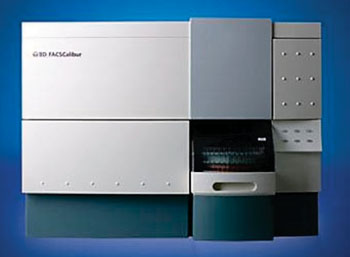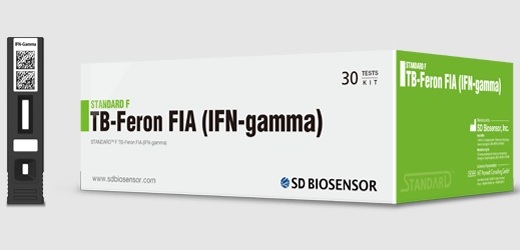Neutrophil CD64 Index Helps Diagnose Spontaneous Bacterial Peritonitis
By LabMedica International staff writers
Posted on 17 Aug 2016
Spontaneous bacterial peritonitis (SBP) is a common and serious complication in patients with ascites caused by decompensated liver cirrhosis, and most cases are caused by bacterial infections spreading to the peritoneum across the gut wall or mesenteric lymphatics.Posted on 17 Aug 2016
Although a diagnostic paracentesis and appropriate ascitic fluid analysis is considered essential for all patients admitted with ascites, the procedure is associated with dangerous complications such as bleeding and infection. In the emergency setting, performing ascitic fluid culture examinations is time-consuming and not always possible.

Image: The BD FACSCalibur flow cytometer (Photo courtesy of BD).
Scientists affiliated with the Capital Medical Hospital (Beijing, China) conducted a prospective study of a total of 123 patients with ascites caused by cirrhosis who fulfilled the inclusion criteria were enrolled from March 2014 to June 2015. Aspirated ascitic fluid was collected in ethylenediaminetetraacetic acid (EDTA) tubes and analyzed within three hours of aspiration. Relevant tests were performed on blood samples to assess the condition of the patients.
Blood samples were collected within six hours after paracentesis and before antibiotic therapy; they were processed within 24 hours after collection for the measurement of CD64 expression on leukocytes by FACSCalibur flow cytometry (Becton Dickinson, Franklin Lakes, NJ, USA) using a Becton Dickinson CD14/CD64 assay kit. The kit includes fluorescein isothiocyanate (FITC)-conjugated anti-CD14 and phycoerythrin (PE)-conjugated anti-CD64 antibodies. The lymphocyte, monocyte, and neutrophil populations are defined by their forward and side scatter characteristics along with surface CD14 staining.
The teams found that the neutrophil CD64 (Fcγ receptor I) index results were significantly higher in cirrhotic patients with SBP than in those without SBP. There was a positive correlation between the neutrophil CD64 index and the polymorphonuclear neutrophil (PMN) count in ascites. In the receiver operating characteristic curve (ROC) analysis, the area under the curve (AUC) was 0.894. The optimal cut-off value for the neutrophil CD64 index was 2.02. The sensitivity and specificity of the neutrophil CD64 index for cirrhotic patients with SBP were 80.49% and 93.90%, respectively. The elevated neutrophil CD64 index was down regulated by antibiotic therapy.
The authors concluded from the results of their study the neutrophil CD64 index could be used as a sensitive and specific indicator for the diagnosis of SBP in cirrhotic patients with ascites. In addition, the neutrophil CD64 index is modulated by antibiotic therapy and could be used to evaluate the effect of therapy in SBP patients. The study was published on July 4, 2016, in the journal International Journal of Infectious Diseases.
Related Links:
Capital Medical Hospital
Becton Dickinson









 Analyzer.jpg)




